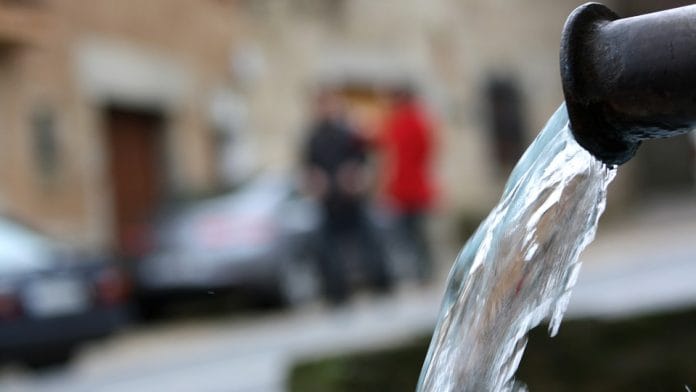New Delhi: Addressing a critical gap in monitoring the quality of drinking water being supplied to households, the Union Jal Shakti Ministry Saturday released comprehensive guidelines that mandate setting up of government-accredited laboratories across states, districts and blocks in the next year.
All the laboratories will have to be accredited by the National Accreditation Board for Testing and Calibration Laboratories (NABL), and will also allow the public to get their samples of water tested to know if it is of the prescribed quality.
There is currently an abysmal shortage of NABL accredited laboratories in India. There are 2,033 drinking water testing laboratories in the country, of which only 66 are NABL accredited.
The drinking water quality, testing, monitoring and surveillance framework released by Union Jal Shakti Minister Gajendra Singh Shekhawat also lays out uniform testing standards to be followed by the laboratories. Presently water testing standards in the country are not only inadequate but are not standardised too.
“We have come up with protocols for testing and monitoring drinking water quality in government-accredited laboratories,” Shekhawat told ThePrint. “This will help consumers who want to test the quality of water supplied to their home as they will know where to go to get water tested.”
The guidelines have capped the price of various tests that consumers want conducted in laboratories to check if the water is contaminated. The maximum price has been fixed at Rs 100 for testing water for presence of arsenic, total coliform bacteria, among others. “But it’s the state which will decide what rate to charge for the various tests,” Shekhawat added.
The framework is part of the government’s flagship Nal Se Jal scheme, under which drinking water connection will be provided to each and every rural households by 2024.
Shekhawat also launched an online portal on Water Quality Information Management System (WQIMS), a centralised database where all the laboratories in the state and UTs will be registered and mapped.
Developed by the National Jal Jeevan Mission in partnership with Indian Council of Medical Research, WQIMS will have an automated data flow of water sample test results, which can help in assuring the safe supply of drinking water.
Also read: Jal Jeevan Mission empowers India’s rural women, increases their participation: MoS Kataria
District labs should have capacity to test 250 samples a month
The guidelines mandate that laboratories should be headed by a senior-level experienced chief chemist or chief water analyst or chief microbiologist.
The laboratories will be responsible for testing at least five per cent of the total drinking water samples across all district-level laboratories with random and uniform geographical spread.
If the number of districts in any state is more than 50, then the testing of samples or sources may be restricted to three per cent for the state laboratories, the guidelines state, adding that the remaining two per cent may be integrated with other regional or district laboratories.
“In case of large states, two or three (depending on requirement) regional labs at par with state-level labs need to be set up so that state-level labs are not overloaded,” says the guideline.
The in-charge of the regional labs would report to the chief chemist at the state-level lab.
At the districts, there should be a laboratory that can test about 250 water sources or samples per month, with an even geographical spread, the guidelines state.
At the block level too, there has to be at least one laboratory in each block to test water quality parameters of all sources.
In case of large blocks, depending on the sample loads, more laboratories can be added to the network by tying up with existing institutions in the block, the new norms say.
At the gram panchayat or village level, the village water and sanitation committees, popularly known as water samitis will have to ensure testing of all drinking water sources including private sources under its jurisdiction using field testing kits.
Besides, mobile water quality testing laboratories will also have to be set up to test specified endemic parameters, congregation areas of local communities, inaccessible areas, etc.
The guideline mandates that the turnaround time for testing the chemical parameters should not exceed 24 hours, whereas for testing the biological parameters, the turnaround time should not exceed 48 hours.
All states and UTs have to ensure that at least one regular post for water analyst or chemist is made available in each district-level drinking water quality testing laboratory.
Up to two per cent of the overall fund of 3.6 lakh crore allocated to the states and UTs has been earmarked for testing as well as strengthening water quality testing laboratories. In the 2021-2022 fiscal, Rs 1000 crore has been earmarked for this purpose.
Nearly 20 states have drinking water sources contaminated
According to an assessment by the Central Ground Water Board in 2018, 52 per cent of all blocks in the country have at least one of the geogenic contaminants such as arsenic, chloride, fluoride, iron, nitrate, among others.
As reported by the states and UTs in the Department of Drinking Water and Sanitation Integrated Management Information System, currently, groundwater sources in 49,232 habitations in India are having water quality issues.
“Nearly 20 states in India have drinking water sources contaminated with arsenic, fluoride, nitrate, iron, salinity or heavy metals etc,” reads the report.
Apart from these contaminants, there are 61 priority districts identified by the Ministry of Health & Family Welfare as affected by Japanese Encephalitis and Acute Encephalitis Syndrome across five States.
Also read: Economic Survey notes ‘improvement in equity’ — better access to bare necessities across India






